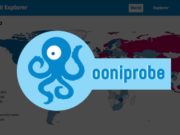

To ensure security, the Tor Network can only be accessed through the Tor Browser. To access this network, the developers of the Tor Network created the Tor Browser, a Mozilla-based web browser that encrypts every piece of outgoing information and which is required to decrypt any data incoming over the Tor Network. On the infrastructure side it connects and coordinates upwards of three thousand nodes across the globe, providing more than enough variety in routing to fully realize the security made possible by onion routing. Originally (but no longer) an acronym for The Onion Router, Tor is a combination of infrastructure and software. The technology was initially useless to civilians since its very premise requires access to computers all over the world, but in 2002 a free, open solution appeared: the Tor Network. This means that it is both very slow and theoretically secure for both server and user. Named for the layered structure it creates, onion routing passes every transmission through a series of intermediary computers between source and destination. Originally patented by the US Navy in 1998, the technology is designed to make online communication untraceable and perfectly anonymous. Onion routing is, like the internet itself, the brainchild of the US military’s advanced research arm.

But let’s begin by explaining some of the history and terminology involved. This is a fundamental blow to a section of the online world which is at least several times larger than the web itself. Actually, it seems to have downed the majority of the Tor Network as a whole, which has far-reaching consequences that extend well beyond illegal pornography. We’ll get to precisely what that means in a moment, but the practical upshot is this: by some estimates, taking down Freedom Host has removed the majority of all child pornography online. This week, something momentous occurred: the FBI and Irish police collaborated to arrest the alleged owner of Freedom Hosting, one of the largest Deep Web hosts in the world.


 0 kommentar(er)
0 kommentar(er)
